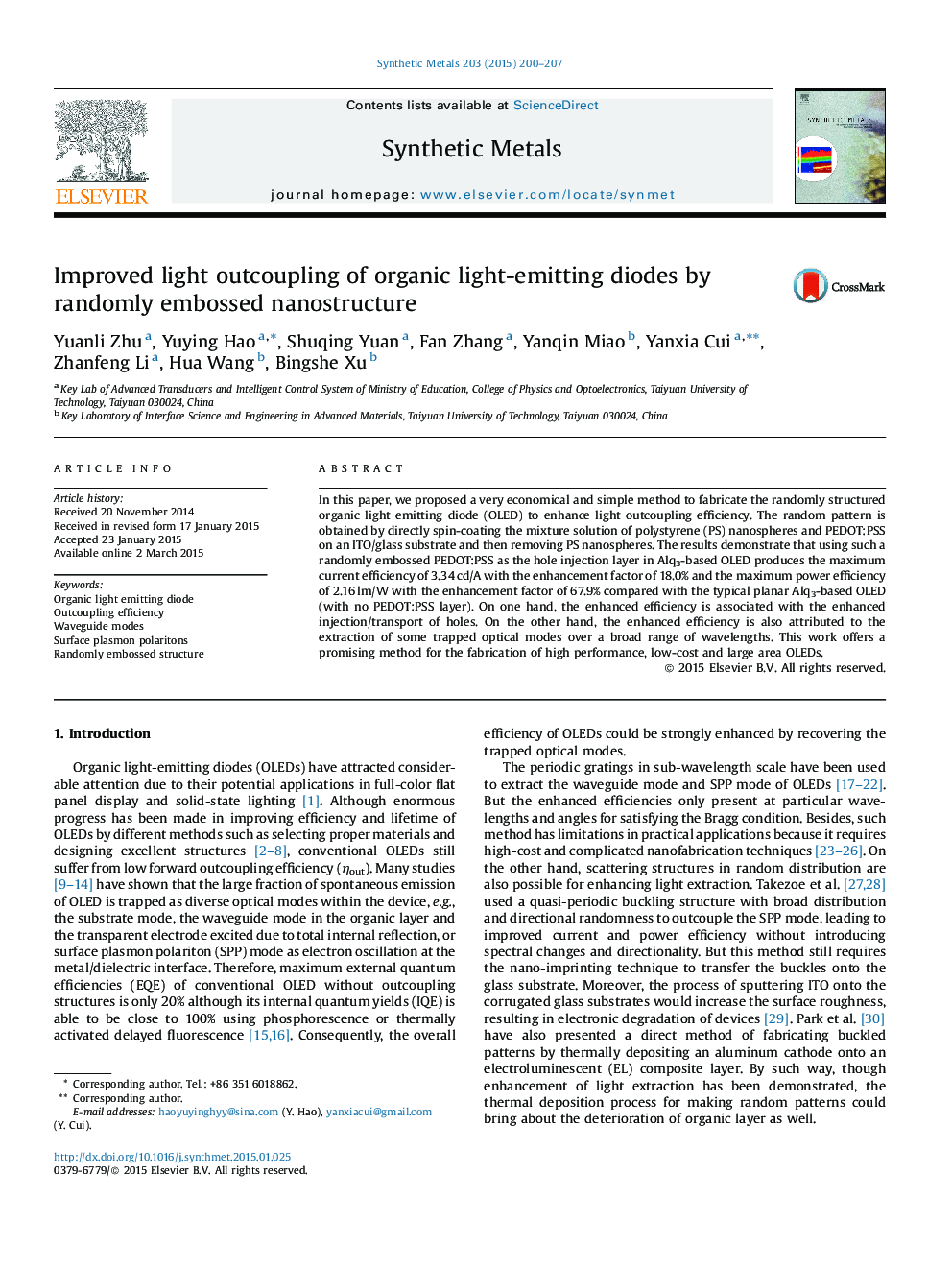| Article ID | Journal | Published Year | Pages | File Type |
|---|---|---|---|---|
| 1440577 | Synthetic Metals | 2015 | 8 Pages |
•A simple and low-cost method is proposed to fabricate randomly structured OLEDs.•The proposal is able to efficiently enhance light outcoupling efficiency.•The mechanisms of efficiency enhancement are analyzed.
In this paper, we proposed a very economical and simple method to fabricate the randomly structured organic light emitting diode (OLED) to enhance light outcoupling efficiency. The random pattern is obtained by directly spin-coating the mixture solution of polystyrene (PS) nanospheres and PEDOT:PSS on an ITO/glass substrate and then removing PS nanospheres. The results demonstrate that using such a randomly embossed PEDOT:PSS as the hole injection layer in Alq3-based OLED produces the maximum current efficiency of 3.34 cd/A with the enhancement factor of 18.0% and the maximum power efficiency of 2.16 lm/W with the enhancement factor of 67.9% compared with the typical planar Alq3-based OLED (with no PEDOT:PSS layer). On one hand, the enhanced efficiency is associated with the enhanced injection/transport of holes. On the other hand, the enhanced efficiency is also attributed to the extraction of some trapped optical modes over a broad range of wavelengths. This work offers a promising method for the fabrication of high performance, low-cost and large area OLEDs.
